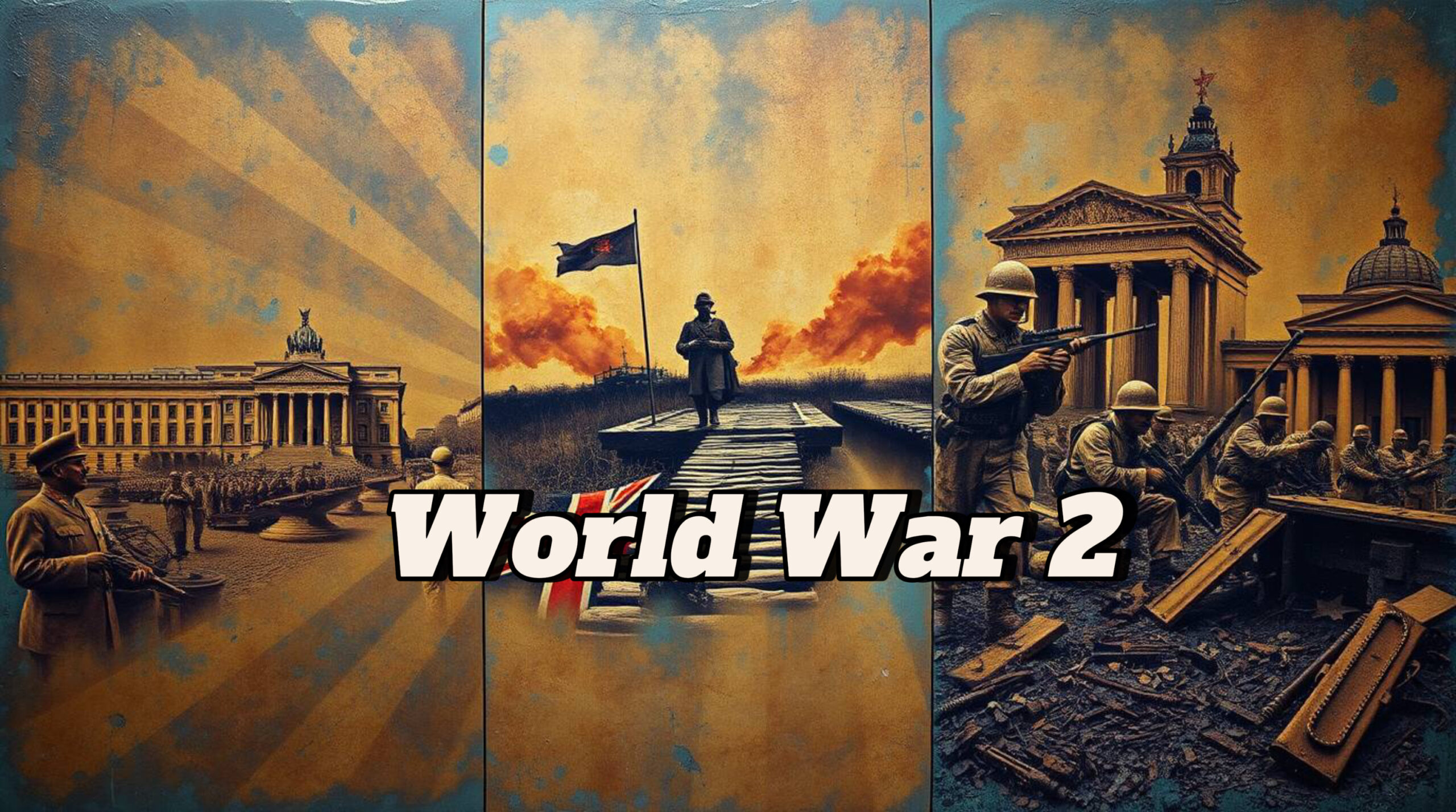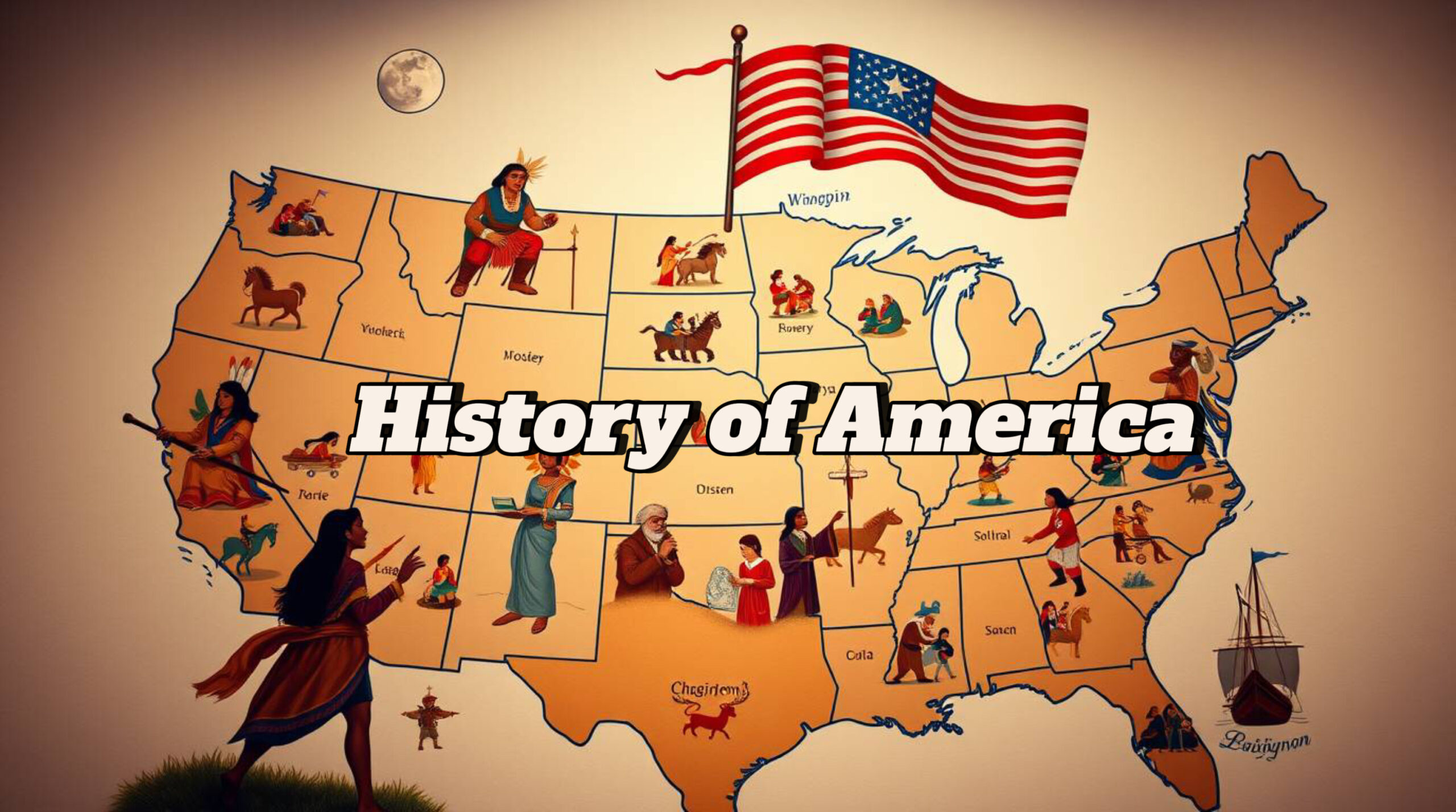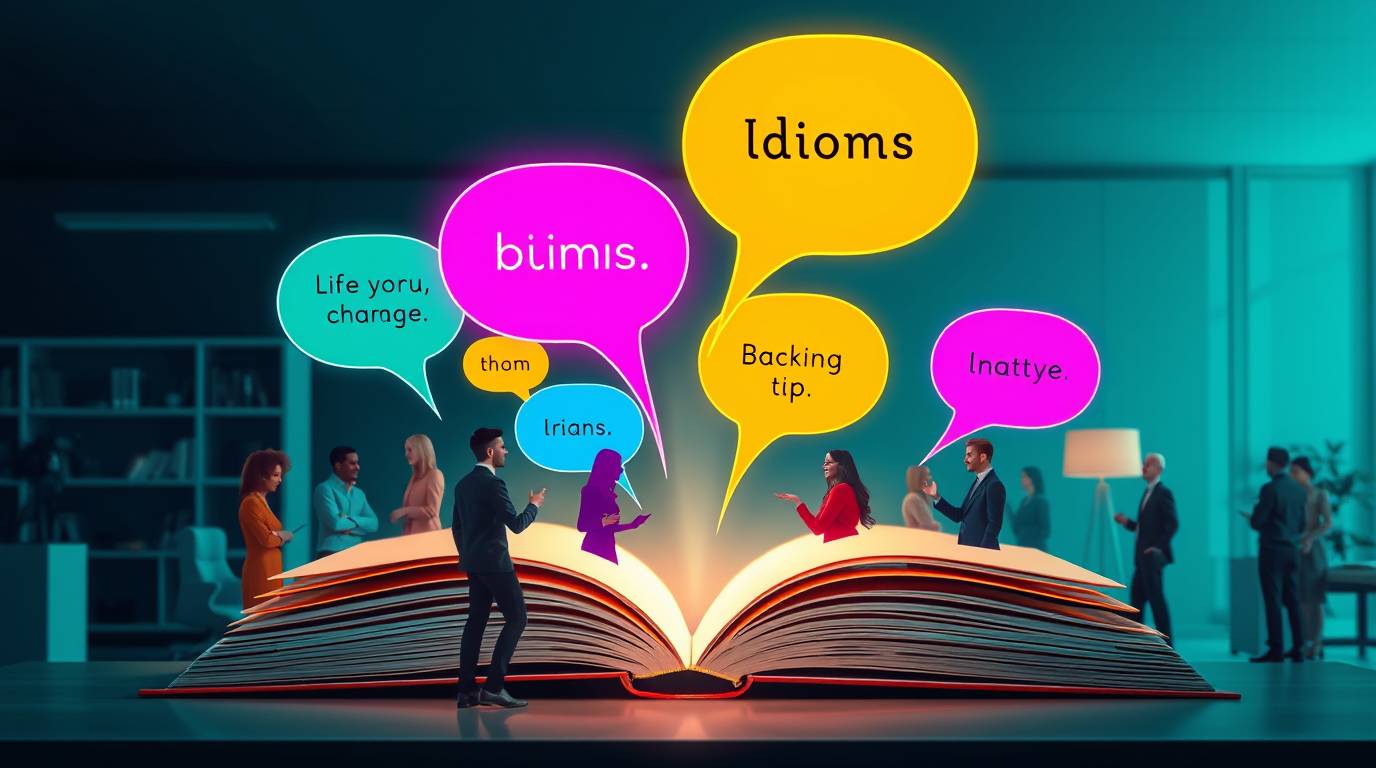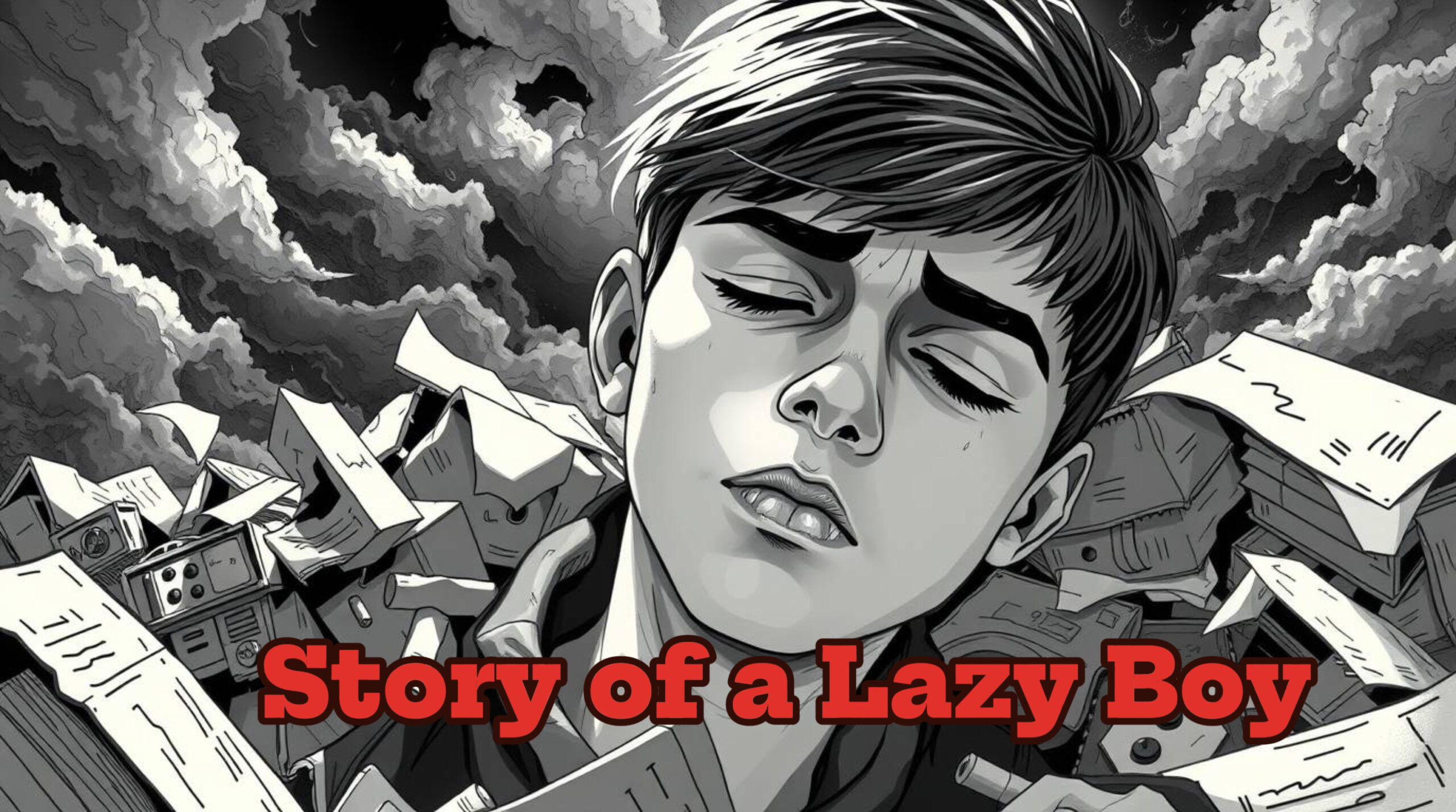Introduction
World War II lasted from 1939 to 1945 and involved nearly every part of the world. Millions of soldiers and civilians were affected, and it led to major changes in society, technology, and politics. Over ten chapters, we’ll explore the causes, key events, and consequences of the war in simple language. Let’s begin
Chapter 1, A Broken Peace
After World War I ended in 1918, many people hoped for a peaceful future. But the peace didn’t last long. The Treaty of Versailles, signed in 1919, punished Germany very harshly. Germany had to give up land, pay large sums of money, and reduce its army. Many Germans felt angry and humiliated. They believed the treaty was unfair.
At the same time, the world faced an economic crisis called the Great Depression. It started in 1929 and spread quickly. People lost their jobs, businesses closed, and families struggled to survive. In Germany, things were especially bad. The economy collapsed, and many people looked for someone to blame.
In this difficult time, a man named Adolf Hitler rose to power. He promised to make Germany strong again and restore its pride. Hitler said he would fix the economy, create jobs, and overturn the Treaty of Versailles. Many Germans liked his ideas and supported him. Slowly, Hitler gained control over the country.
But Hitler’s plans were dangerous. He wanted more land for Germany and believed his country was superior to others. He ignored the treaty and began rebuilding the German army. Neighboring countries watched nervously as Germany grew stronger. Tensions rose across Europe, and the stage was set for another war.
Think about this. How can unfair treaties or economic problems lead to conflict? Could World War II have been avoided? These are big questions, and historians still debate them today.
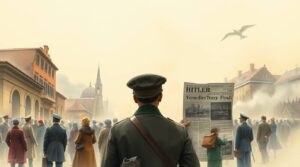
Chapter 2, Hitler’s Rise to Power
Hello learners. Welcome back to Talk Easy. I’m Ben, and we continue our journey through the story of World War II. In our last chapter, we learned about the Treaty of Versailles and how it created anger and economic problems in Germany. Now, let’s explore how Adolf Hitler rose to power and began changing the world.
Adolf Hitler was born in Austria in 1889. He moved to Germany as a young man and fought in World War I. After the war, he joined a small political group called the Nazi Party. At first, the party had very few members, but Hitler quickly became its leader. He was a powerful speaker, and his words inspired many people who were struggling during the Great Depression.
Hitler promised to make Germany strong again. He said he would create jobs, rebuild the economy, and overturn the Treaty of Versailles. Many Germans liked his ideas and believed he could restore their country’s pride. Slowly, Hitler gained more followers. By 1933, he had become the Chancellor of Germany, the most powerful position in the government.
Once in power, Hitler began making big changes. He stopped following the rules of the Treaty of Versailles. He rebuilt Germany’s army, which had been limited after World War I. He also took control of the media and schools, spreading his ideas across the country. People who disagreed with him were silenced or punished. Hitler wanted everyone to support his vision of a strong and united Germany.
But Hitler’s plans were not just about Germany. He believed that Germans were superior to other races and that they deserved more land. In 1938, he took over Austria, a country next to Germany. The following year, he invaded Czechoslovakia. Other countries watched nervously, unsure of what to do. Some hoped that giving Hitler what he wanted would prevent another war. But this policy, called appeasement, only made him bolder.
Think about this. Why do you think so many people supported Hitler? Was it because of his promises, or was it because they were afraid? These are important questions, and historians still study them today.
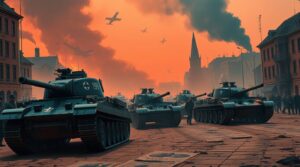
Chapter 3, The Spark That Started the War
Hello learners. Welcome back to Talk Easy. I’m Ben, and we’re continuing our journey through the story of World War II. In the last chapter, we learned about Adolf Hitler’s rise to power and how he began expanding Germany’s borders. Now, let’s explore the event that officially started World War II—the invasion of Poland.
By 1939, Adolf Hitler had already taken over Austria and Czechoslovakia. Many countries in Europe were worried, but they hoped that giving Hitler what he wanted would prevent another war. This approach was called appeasement. However, Hitler’s ambitions didn’t stop there. He set his sights on Poland, a country in Eastern Europe.
Poland was important to Hitler for several reasons. First, it had land that Germany once controlled before World War I. Second, Hitler wanted to expand Germany’s territory further east. But Poland was not alone. Britain and France had promised to protect Poland if anyone attacked it. They warned Hitler to stay away, but he ignored them.
On September 1, 1939, Germany launched a massive attack on Poland. It was a new kind of warfare called blitzkrieg, which means lightning war. German planes bombed cities and towns, while fast-moving tanks and soldiers overwhelmed Polish defenses. The attack was swift and brutal. Within days, much of Poland was under German control.
Britain and France could no longer stand by and watch. On September 3, 1939, they declared war on Germany. This marked the official start of World War II. Other countries soon joined the fight, either supporting Germany or opposing it. The world was now divided into two sides—the Allies, led by Britain, France, and later the Soviet Union and the United States, and the Axis Powers, led by Germany, Italy, and Japan.
The invasion of Poland shocked the world. People realized that another global war had begun, just 20 years after the end of World War I. Many wondered how this could happen again. Was it because of Hitler’s aggression, or was it because other countries didn’t act sooner?
Think about this. What would you have done if you were a leader in 1939? Would you have tried to stop Hitler earlier, or would you have waited to see what happened? These are difficult questions, and historians still debate them today.
Chapter 4, The Battle of Britain
Hello learners. Welcome back to Talk Easy. I’m Ben, and we’re continuing our journey through the story of World War II. In the last chapter, we learned about the invasion of Poland and how it marked the official start of the war. Now, let’s explore one of the most important battles of the early years—the Battle of Britain.
After Germany’s quick victories in Poland and other parts of Europe, Adolf Hitler turned his attention to Britain. By the summer of 1940, much of Western Europe was under German control. France had fallen, and Britain stood alone against the Axis Powers. Hitler believed that Britain would soon surrender, but he was wrong.
Germany’s plan was simple. First, they would use their air force, called the Luftwaffe, to destroy Britain’s Royal Air Force, or RAF. Once the RAF was weakened, Germany could invade Britain by sea. This plan was called Operation Sea Lion. But the British were not ready to give up.
The battle began in July 1940 and lasted for several months. German planes bombed cities, factories, and airfields across Britain. They hoped to break the spirit of the British people and force them to surrender. But the RAF fought back fiercely. British pilots, flying Spitfire and Hurricane planes, defended their country with great bravery.
One of the key reasons Britain survived was a new invention called radar. Radar allowed the British to detect German planes as they approached. This gave the RAF time to prepare and fight back. Day after day, the skies over Britain filled with planes, explosions, and smoke. It was a desperate struggle, but the British refused to lose.
By October 1940, Germany realized they could not defeat Britain’s air force. Hitler decided to stop the invasion plans and focus on other parts of Europe. The Battle of Britain was over, and Britain had won. This victory was a turning point in the war. It showed the world that Germany could be stopped.
Think about this. What made Britain able to resist Germany when so many other countries had fallen? Was it their technology, like radar, or was it the courage of their people? These are important questions, and historians still study them today.
Now, let’s move on to Chapter 5, where we’ll learn about another major event that changed the course of the war—Japan’s attack on Pearl Harbor and the United States’ entry into the conflict.
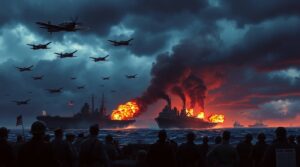
Chapter 5, Pearl Harbor and the U.S
In the last chapter, we learned about the Battle of Britain and how the United Kingdom stood strong against Germany’s attacks. Now, let’s explore another major event that changed the course of the war—Japan’s attack on Pearl Harbor and the United States’ entry into the conflict.
Joins the War. By 1941, World War II had been raging for over two years. Europe and parts of Asia were deeply involved in the fighting, but one powerful country had stayed out of the war—the United States. Many Americans believed their country should focus on its own problems and avoid getting involved in foreign conflicts. But everything changed on December 7, 1941.
On that quiet Sunday morning, Japan launched a surprise attack on Pearl Harbor, a U.S. naval base in Hawaii. Japanese planes bombed ships, destroyed airplanes, and killed more than 2,400 Americans. The attack was swift and devastating. It shocked the entire nation and brought the United States into the war.
Why did Japan attack Pearl Harbor? Japan wanted to expand its empire in Asia and the Pacific. They saw the United States as a threat because America had cut off Japan’s access to important resources like oil. Japan believed that destroying the U.S. Pacific Fleet at Pearl Harbor would weaken America and give Japan time to conquer more territory without interference.
The day after the attack, President Franklin D. Roosevelt addressed the American people. He called December 7 “a date which will live in infamy” and asked Congress to declare war on Japan. The United States officially entered World War II. A few days later, Germany and Italy declared war on the United States, bringing America into the conflict in Europe as well.
The attack on Pearl Harbor united the American people. Before the attack, many had disagreed about whether to join the war. But now, almost everyone supported the fight against the Axis Powers. Factories began producing weapons, planes, and ships. Men and women joined the military or worked in jobs to support the war effort. The United States became a key player in the Allied forces.
Think about this. How did the attack on Pearl Harbor change the course of the war? Do you think the United States would have joined the war if Japan hadn’t attacked? These are important questions, and historians still study them today.
Now, let’s move on to Chapter 6, where we’ll learn about one of the darkest chapters of World War II—the Holocaust.
Chapter 6, The Holocaust
In the last chapter, we learned about the attack on Pearl Harbor and how it brought the United States into the war. Now, let’s explore one of the darkest chapters of World War II—the Holocaust.
While battles raged across Europe and the Pacific, a terrible tragedy was happening behind the scenes. This tragedy was called the Holocaust. It was a plan by Adolf Hitler and the Nazi Party to kill millions of people simply because of who they were. The victims included Jewish people, Roma people, disabled individuals, and others who didn’t fit Hitler’s idea of a “perfect” society.
The Holocaust began in the 1930s when Hitler came to power. At first, Jewish people in Germany were treated unfairly. They lost their jobs, homes, and rights. Many tried to leave the country, but not all could escape. As World War II started, the situation grew much worse. Hitler wanted to get rid of all Jewish people in Europe. He called this plan the “Final Solution.”
To carry out this plan, the Nazis built concentration camps and death camps. These were places where innocent people were held as prisoners. Many were forced to work in terrible conditions with little food or rest. Others were sent directly to gas chambers and killed. Families were torn apart, and millions of lives were lost.
One of the most infamous camps was Auschwitz, located in Poland. Over a million people died there. Men, women, and even children were taken from their homes, packed into trains, and sent to these camps. When they arrived, they were separated from their families. Some were chosen for work, while others were sent to die.
Not everyone stood by and watched. Some brave individuals risked their lives to help the victims. For example, Oskar Schindler, a German businessman, saved over a thousand Jewish people by employing them in his factories. Others hid families in their homes or helped them escape to safer countries. These heroes remind us that even in the darkest times, there is hope and kindness.
By the end of the war, Allied forces discovered the camps and freed the survivors. The world was shocked by what they saw. The Holocaust showed the world the dangers of hate, prejudice, and unchecked power. It also taught us the importance of remembering and learning from history so that such a tragedy never happens again.
Think about this. How can we make sure something like the Holocaust never happens again? What lessons can we learn from this dark chapter in history? These are important questions, and historians still study them today.
Now, let’s move on to Chapter 7, where we’ll learn about D-Day and the Allied invasion of Europe. Stay with me as we uncover how this massive operation marked the beginning of the end for Germany.
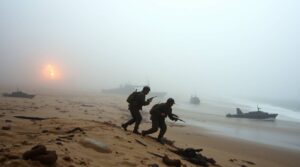
Chapter 7, D-Day and the Fight for Europe
By 1944, Germany still controlled much of Europe. Adolf Hitler’s forces had taken over many countries, including France, Belgium, and Poland. The Allies—the United States, Britain, the Soviet Union, and others—knew they had to fight back. They decided to launch a massive attack to free Western Europe from German control. This attack became known as D-Day.
D-Day took place on June 6, 1944. It was one of the largest military operations in history. Thousands of Allied soldiers crossed the English Channel to land on the beaches of Normandy in France. These beaches had names like Utah, Omaha, Gold, Juno, and Sword. The goal was simple: gain a foothold in France and push back against Germany.
The operation was carefully planned but extremely dangerous. German soldiers were waiting on the beaches with guns and tanks. Many Allied soldiers died as soon as they arrived. But despite the heavy losses, the Allies kept fighting. They climbed cliffs, destroyed enemy defenses, and slowly moved inland. By the end of the day, they had secured a small but important area in France.
D-Day was a success, but the fight was far from over. Over the next few months, the Allies pushed deeper into France. Towns and cities were freed from German control. Finally, in August 1944, Paris, the capital of France, was liberated. People celebrated in the streets as the Allies marched into the city. It was a moment of hope after years of suffering.
The success of D-Day marked the beginning of the end for Germany. Hitler’s army was now fighting on two fronts. In the west, the Allies were pushing toward Germany. In the east, the Soviet Union was advancing from the other side. Germany was being squeezed from both directions, and it was only a matter of time before the war would end.
Think about this. Why was D-Day so important? Could the Allies have won the war without this operation? These are important questions, and historians still study them today.
Now, let’s move on to Chapter 8, where we’ll learn about the fall of Berlin and the end of the war in Europe.
Chapter 8, The Fall of Berlin
Hello learners. Welcome back to Talk Easy. I’m Ben, and we’re continuing our journey through the story of World War II. In the last chapter, we learned about D-Day and how the Allies began to push back against Germany in Europe. Now, let’s explore the final days of the war in Europe—the fall of Berlin.
By early 1945, Germany was in trouble. Allied forces were closing in from the west, and Soviet troops were advancing from the east. Adolf Hitler’s army was weak, and his dream of a powerful German empire was falling apart. The final battle would take place in Berlin, Germany’s capital.
Berlin was heavily defended by German soldiers, but it could not withstand the massive attack led by the Soviet Union. In April 1945, Soviet forces surrounded the city and began their assault. Artillery shells and bombs rained down on Berlin, destroying buildings and creating chaos. Civilians hid in basements, afraid for their lives. It was clear that Germany’s defeat was near.
Inside Berlin, Adolf Hitler was hiding in a bunker underground. He refused to surrender, even as the city crumbled around him. On April 30, 1945, Hitler took his own life. His death marked the end of his rule and his dangerous ideas. A few days later, on May 7, 1945, Germany officially surrendered to the Allies. The war in Europe was over.
People across the world celebrated the news. In London, New York, and Moscow, crowds filled the streets, cheering and singing. Soldiers hugged each other, and families cried tears of joy. May 8, 1945, became known as Victory in Europe Day, or V-E Day. It was a moment of relief after six long years of war.
But while Europe celebrated, the war was not yet over everywhere. In the Pacific, Japan was still fighting against the Allies. It would take a few more months before the entire world could finally say the war had ended.
Think about this. How did the fall of Berlin change the course of history? What lessons can we learn from the actions of leaders like Adolf Hitler? These are important questions, and historians still study them today.
Now, let’s move on to Chapter 9, where we’ll learn about the atomic bombs dropped on Japan and how they brought an end to World War II. Stay with me as we uncover the final chapter of this global conflict.
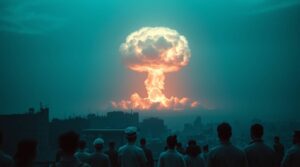
Chapter 9, Atomic Bombs and Japan’s Surrender
Hello learners. Welcome back to Talk Easy. I’m Ben, and we’re continuing our journey through the story of World War II. In the last chapter, we learned about the fall of Berlin and how Germany’s surrender marked the end of the war in Europe. Now, let’s explore the final events of the war—the atomic bombs dropped on Japan and how they brought an end to World War II.
By the summer of 1945, Germany had surrendered, but the war was still raging in the Pacific. Japan continued to fight fiercely against the Allies, refusing to give up. The United States and its allies knew that invading Japan would cost many lives, so they decided to use a new and powerful weapon—the atomic bomb.
On August 6, 1945, the United States dropped the first atomic bomb on the Japanese city of Hiroshima. The bomb destroyed nearly everything in its path. Buildings collapsed, fires spread, and tens of thousands of people died instantly. Many more became sick or injured from the effects of radiation. Three days later, on August 9, a second atomic bomb was dropped on the city of Nagasaki. Again, the destruction was massive, and many innocent lives were lost.
The atomic bombs shocked Japan’s leaders. They realized they could not continue fighting. On August 15, 1945, Japan announced its surrender. A formal ceremony took place on September 2, 1945, aboard a U.S. battleship called the USS Missouri. World War II was finally over.
The bombings of Hiroshima and Nagasaki remain controversial to this day. Some people believe they were necessary to end the war quickly and save lives. Others think there could have been another way to force Japan’s surrender without causing so much suffering. The atomic bombs showed the world the devastating power of nuclear weapons, and they changed the way countries thought about war forever.
Think about this. Was dropping the atomic bombs the right decision? How can we prevent such tragedies from happening again? These are difficult questions, and historians still debate them today.
Now, let’s move on to Chapter 10, where we’ll reflect on the lessons of World War II and how it shaped the modern world.
Chapter 10, Lessons from the War
In the last chapter, we learned about the atomic bombs dropped on Japan and how they brought an end to the war. Now, let’s reflect on the lessons of World War II and how it shaped the modern world.
World War II was one of the deadliest conflicts in human history. Millions of soldiers and civilians lost their lives, and many cities were destroyed. But the war also led to major changes in the world. It taught us important lessons about peace, cooperation, and the dangers of hate and prejudice.
One of the biggest changes after the war was the creation of the United Nations. The United Nations is an organization that brings countries together to solve problems and prevent future wars. Its goal is to promote peace, protect human rights, and help people in need. The United Nations still plays an important role in the world today.
The war also changed the way countries thought about power. The United States and the Soviet Union emerged as the two strongest nations, but they soon became rivals. This led to a period called the Cold War, where tensions between them shaped global politics for decades. At the same time, many colonies in Asia and Africa gained independence, creating new nations and reshaping the map of the world.
World War II also showed the importance of remembering history. The Holocaust, the atomic bombs, and the millions of lives lost remind us of the cost of war. Museums, memorials, and books help us honor those who suffered and ensure that future generations learn from the past.
Think about this. How can we work together to create a more peaceful world? What can we do to prevent conflicts like World War II from happening again? These are important questions, and they remind us that everyone has a role to play in building a better future.
—
Here’s a list of **SEO-friendly tags** for your website or YouTube video about **World War II**. These tags are designed to improve search visibility, attract the right audience, and align with A1 learners’ needs. Use them as meta tags, keywords, or hashtags depending on your platform.
—
### **Primary Tags (Core Keywords):**
—
### **Long-Tail Tags (Specific Phrases):**
– World War II Story for A1 Learners
– Learn About Pearl Harbor in English
– D-Day Explained Simply
– The Holocaust in Easy English
– How to Learn English Through History
– Atomic Bombs Hiroshima Nagasaki
– Causes and Effects of World War II
– English Listening Skills for Beginners
—
### **Hashtags (For Social Media or Video Platforms):**
– #LearnEnglish
– #A1English
– #WorldWarII
– #HistoryInEnglish
– #EnglishListeningPractice
– #GradedReaders
– #TalkEasy
– #EnglishStories
– #BeginnerEnglish
– #EnglishVocabulary
– #PearlHarbor
– #Dday
– #Holocaust
– #AtomicBombs
